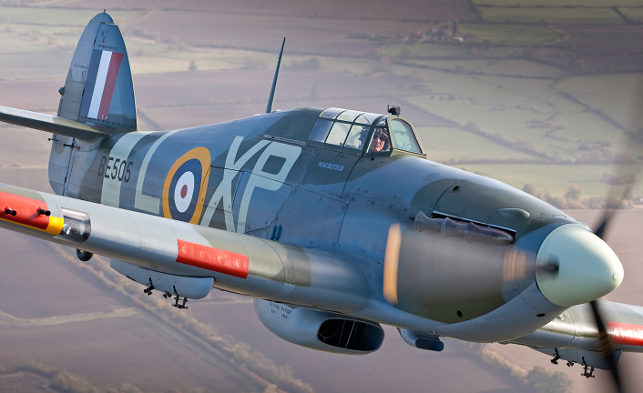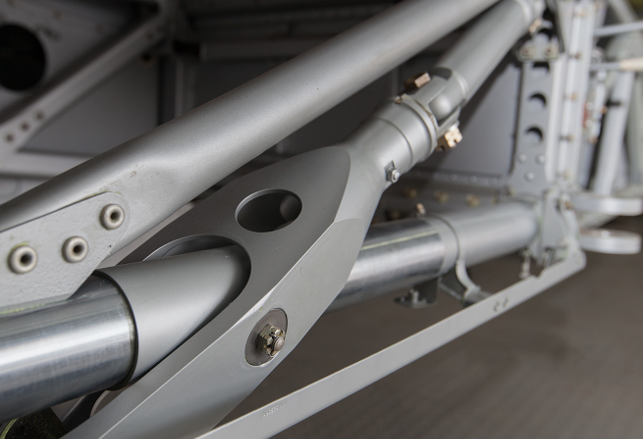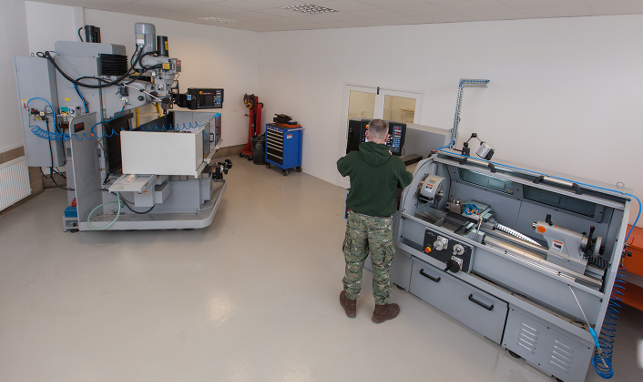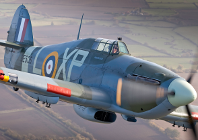
A restored Hawker Hurricane in its natural environment
Hawker Restorations is the world’s foremost restorer of the iconic Hawker Hurricane aircraft, having restored or worked on 13 of the 15 airworthy planes still in existence today. Its sister company Hawker Racing, meanwhile, has helped its customers notch up a string of honours in historic races, through its work in restoring and replicating pre-1966 Grand Prix and sports cars.
This type of work requires many parts to be manufactured, either from original blueprints or fresh designs. “There are literally thousands of components that we have to manufacture, from suspension, gearbox and steering on the cars, to undercarriage, wing fittings and hydraulic components for the aircraft,” says owner Tony Ditheridge.
While the Hurricane’s record is sometimes overshadowed by that of its contemporary, the Spitfire, it was in fact the more successful of the two, shooting down 656 enemy aircraft, compared to the Spitfire’s 529.
The Hurricane was also the more complex aircraft, which may account for the fact that only 14,583 were built, compared to 22,000 Spitfires (of which 45 today remain airworthy). The complexity of its construction meant that Hawker Restorations almost didn’t ‘get off the ground’ as a business, due to the cost of tooling and materials.
But in 1993, it was approached by New Zealand-based businessman and aviation enthusiast Sir Tim Wallis, who funded the materials to restore the first three Hurricanes.
One of these was shipped to Sir Tim in New Zealand; the second went to Microsoft co-founder Paul Allen; and the third to Steven Grey of the Fighter Collection at the Imperial War Museum Duxford.

Undercarriage components machined on the XYZ machines at Hawker Restorations
Machining capability
While many of Hawker Restoration’s 15 employees are highly skilled toolmakers, well-versed in using the company’s on-site manual machines, much of the company’s machining work was previously put out to subcontract, with fellow aircraft enthusiast and Rolls-Royce Merlin engine specialist Maurice Hammond at Eye Tech Engineering stepping in to provide these services.
But with business increasing, the decision was made to supplement the work done by Eye Tech with its equipment from XYZ Machine Tools, with a new in-house machining facility at Hawker Restoration’s Suffolk premises.
“We have more than enough work to keep Eye Tech busy, but we recognised that we also needed our own CNC machining capability, especially and primarily for our historic racing car business, so we took the decision to invest in some XYZ machines of our own,” Ditheridge explains.
“That continuation means that, in effect, every machined part that we use on our aircraft has been on an XYZ machine at some point, whether ours or Eye Tech’s.”
The machines bought by Hawker Restorations are an XYZ SMX 3500 bed mill and an XYZ ProTurn SLX 355 lathe. Both are controlled by the ProtoTrak control system.The XYZ SMX 3500 bed mill sits in the middle of the XYZ bed mill range and features a 3.75 kW (5hp), 5000 revs/min, 40 ISO spindle, with two speed ranges.
A wide range of components can be accommodated by its axis travels of 787mm by 508mm by 500mm (xyz), with additional quill travel of 128 mm. The machine’s table size is 1372mm by 356mm, with a maximum load capacity of 600 kg. Further versatility is provided by the head, which can be tilted 45 degrees either side of the vertical.
The XYZ ProTurn SLX 355, meanwhile, has a 360mm swing over the bed (225mm over the cross slide) and between-centre distance of 1000mm. With a 5.75 kW (7.5 hp), 4000 revs/min spindle, it is a very capable machine backed up by solid cast bed that provides a highly stable machining platform.
As with the SMX mills, the SLX lathes can be operated under full control of ProtoTrak, in full manual operation, or in ‘Traking’ mode, which allows the operator to wind the handwheel to move the machine through the programme. This facility is ideal for those who want to check a programme before committing to full CNC mode, giving the operator greater confidence.
Once they’re happy with the programme, the operator simply presses the cycle start button and the programme runs fully automatically.

The new machining facility at Hawker Restorations
Training and support
To ensure that Hawker Restorations gets the most from the ProtoTrak control, three of its toolmakers underwent training, initially spending one day at XYZ’s Waltham Abbey showroom to learn the basics, followed up by a further, more advanced day of training once they were more familiar with the system.
For ongoing support, and as they start to look to machine more complex components, they will have full and free access to XYZ’s programming hotline.
This extended support may well come in handy on one project currently in the planning stages. Sitting in the workshop of Hawker Racing is a unique Parnell Supercharged 1934/36 MG K3 racing car.
This car has the original twin cam engine fitted – the only engine of its kind in the world. Hawker Racing now has the patterns and drawings for the engine and the plan is to manufacture brand-new engines of this type, with all of the machining, once again, being undertaken on the XYZ machines.
Hawker Restoration’s new CNC machining prowess reaches new heights
Default






